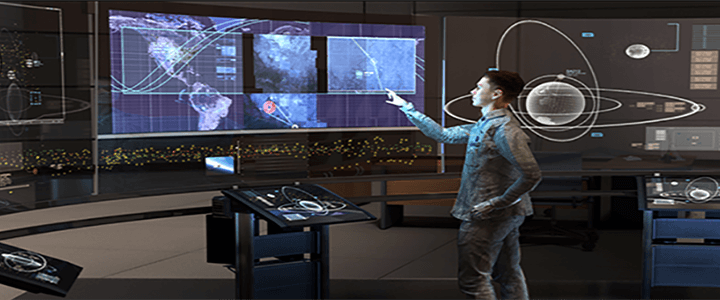IN TODAY’S OPEN-SOURCE HEADLINES . . .
I’m guessing many of you don’t remember science fiction writer Seven Lisberger’s Tron. I was a junior in high school when the film came out in 1982. In short, Tron tells the story of computer programmer Kevin Flynn, who finds himself inside the programs in a swashbuckling cybersecurity fight. I’ll be watching Tron again this weekend—not because I’m having a Dazed and Confused sort of flashback to the 80s of which my wife routinely accuses me (she’s right), but because I think we’re there.
Federal Times’ John Edwards and Eve Keiser report that Plan-X is about ready for deployment. Also see Cheryl Pellerin’s “Plan X Gives Military Operators a Place to Wage Cyber Warfare.” Frankly, I missed the whole Plan-X move, and it’s pretty fascinating, and it’s an eerily nice follow-up to Monday’s “Defining the Principles of Cyberwarfare” that highlighted some of the more practical ethical and moral considerations of our evolution into cyberspace and the inevitable cyberwars to follow.
According to Edwards and Keiser, Plan-X will “give cyber warriors instantaneous knowledge of a network attack.” The knowledge is instant because the cyber warrior is essentially walking in, living in, something along the lines of a virtual cyberworld (The Matrix). “Plan-X provides real time cyber battlespace navigation and reasoning along with graphical plan construction,” as Edwards and Keiser write. Or, as DARPA Product Manager Frank Pound explains, “’The data model is navigable in a visual way, similar to how people natively think about relationships between common objects’ . . . . Under the hood, Plan-X provides a very lightweight on-demand execution environment controlled by a backend system which allows for streamlined storage and retrieval of cyber threat intelligence coming from existing cyber security products the DoD as already deployed.’”
CYBERWAR FOR DUMMIES
By the way, Pound debunks the stereotype that Marines by nature aren’t too bright: he’s been serving in the Marines since 1989 (2 years after Tron), he was in Baghdad during the invasion in 2003, and he’s really, really smart. Pound came to DARPA’s Information Innovation Office (I2O) from Raytheon SI Government Solutions early in 2014. You can read all about I2O in Aaron Boyd’s “How DARPA’s I2O Finds Innovation on the Edge,” an interview with I2O’s deputy director Brian Pierce. Pierce explains that, in part, I2O is about “empowering the human within the information ecosystem. We want to do more,” Piece says, “in terms of how do we enhance the human/computer, human/machine partnership.” With I2O, Pound’s “principally interested in cyber operations and providing a useful interface to the ‘living Internet of things’ such that it can be more easily measured and understood,” DARPA explains.
Remember last week’s “Cybersecurity Worker Shortfall and the Impending Cyber War.” It’s all coming together. Almost a year ago, Extreme Tech’s Graham Templeton explained one good reason Plan-X can make diving into the World Wide Web easier: “What is the biggest military in the world to do, when one of the most important upcoming industries simply can’t provide the volume of talent they require to keep their operations safe? DARPA’s Plan X is an attempt to answer that question. . . . Rather than increasing the amount of talent being produced (this has been tried for several years), instead try simply lowering the amount of talent needed to do the job.”
In other words, make it so even I could do it.




